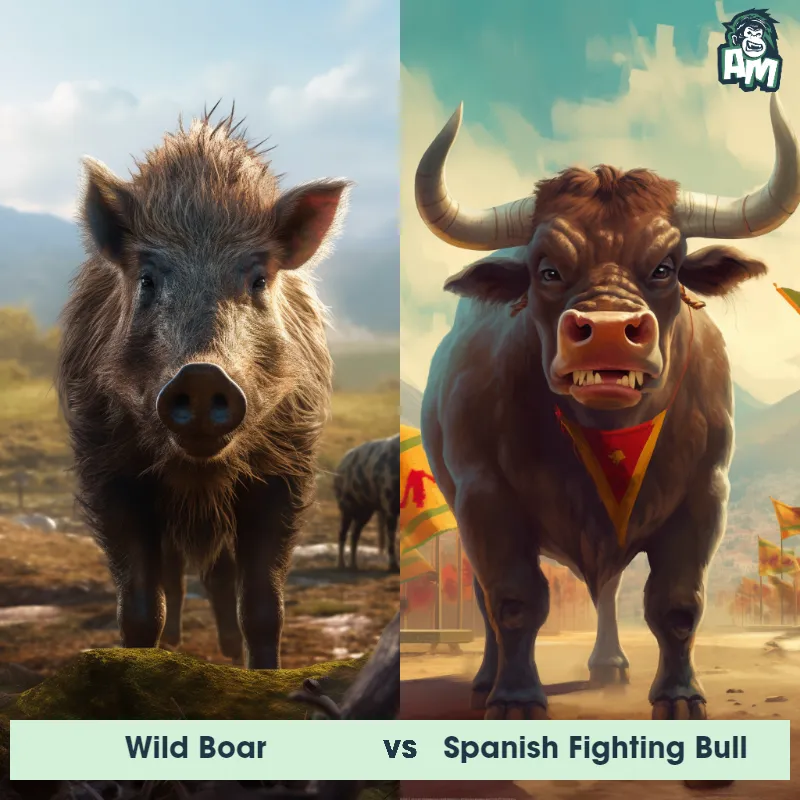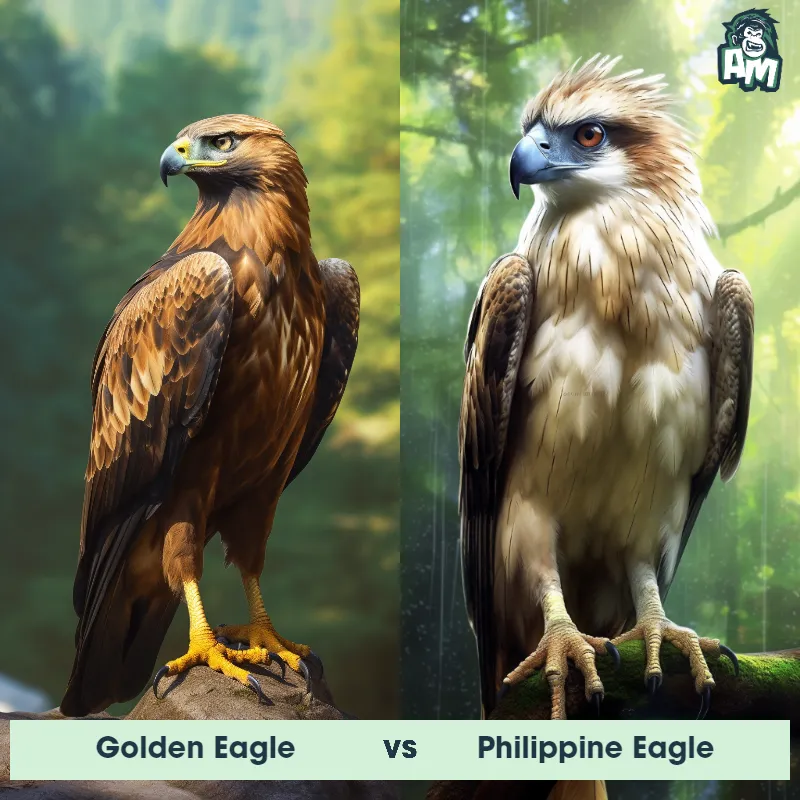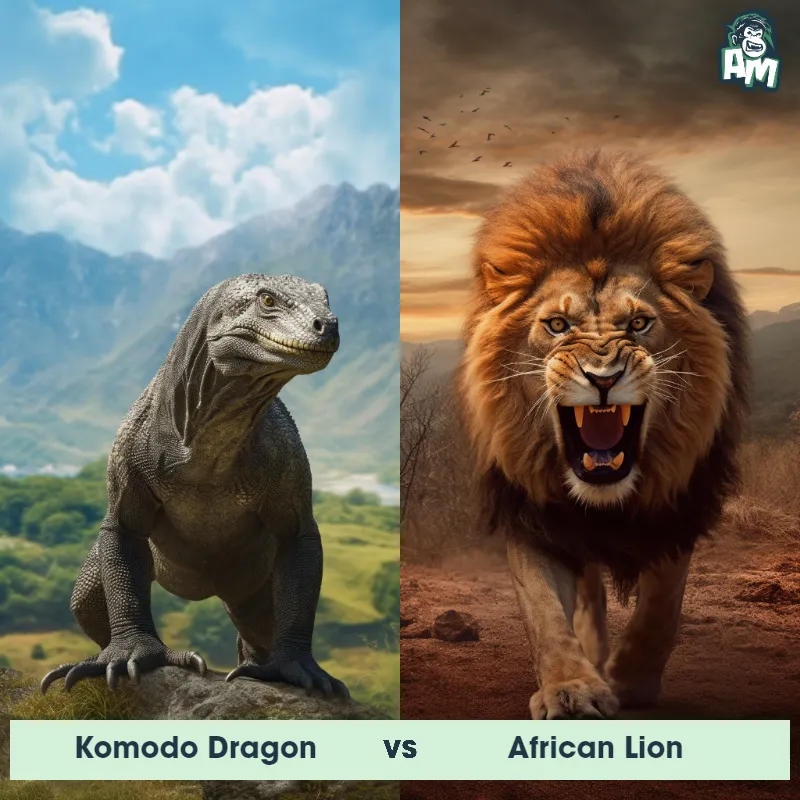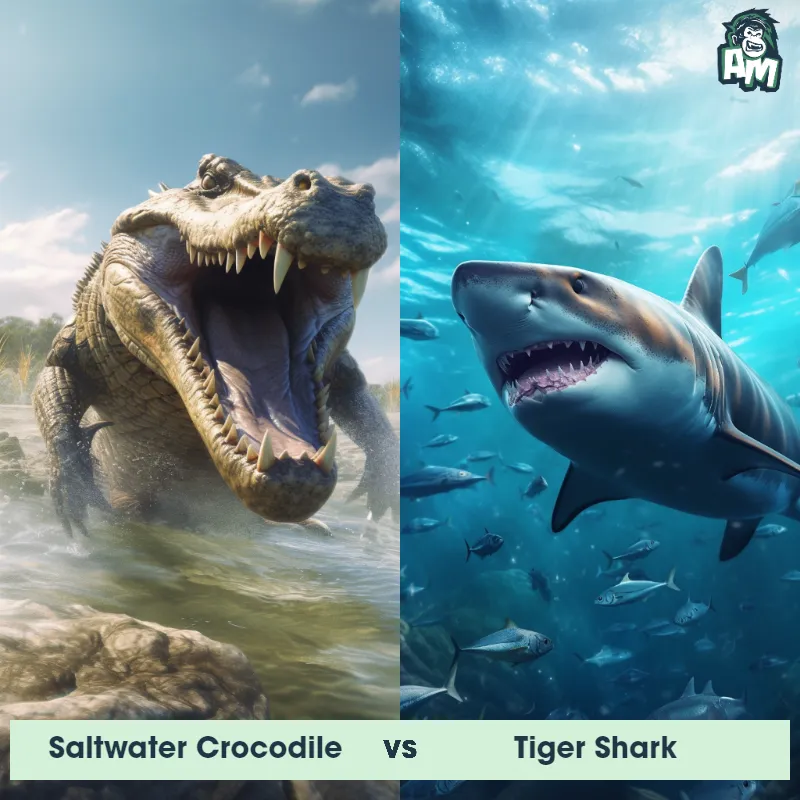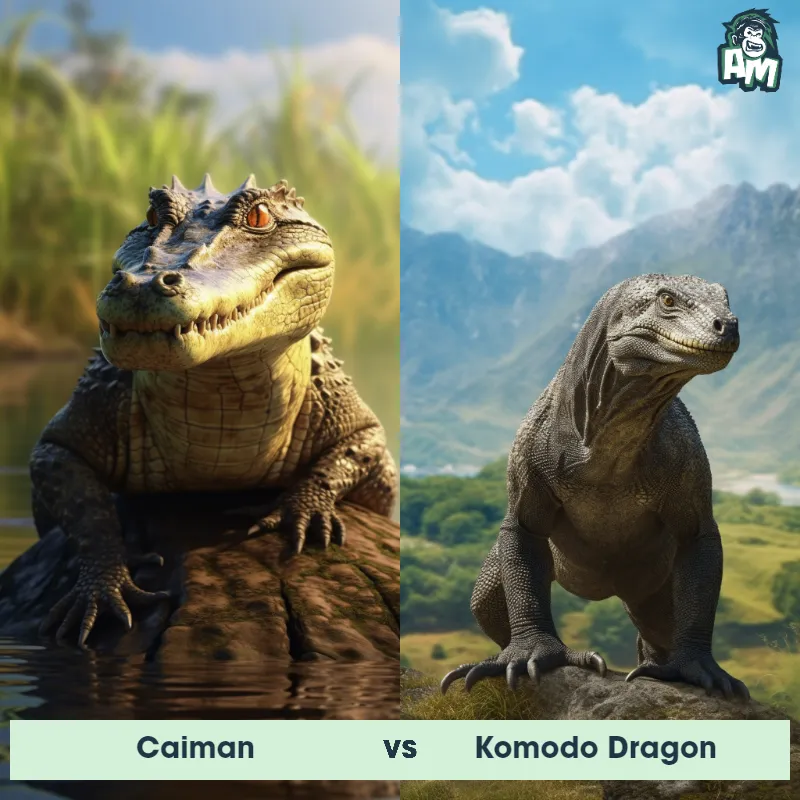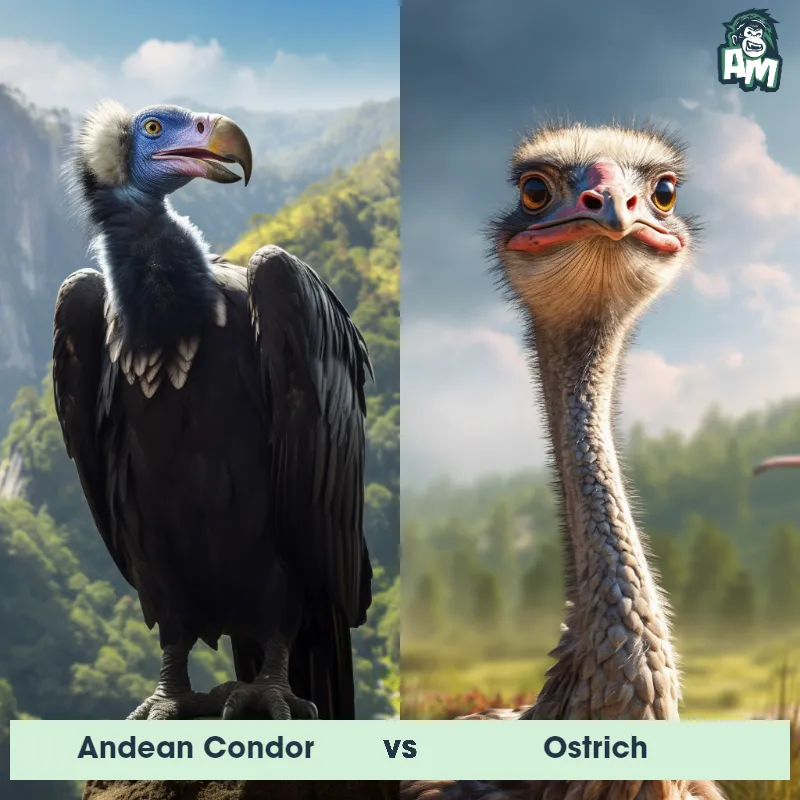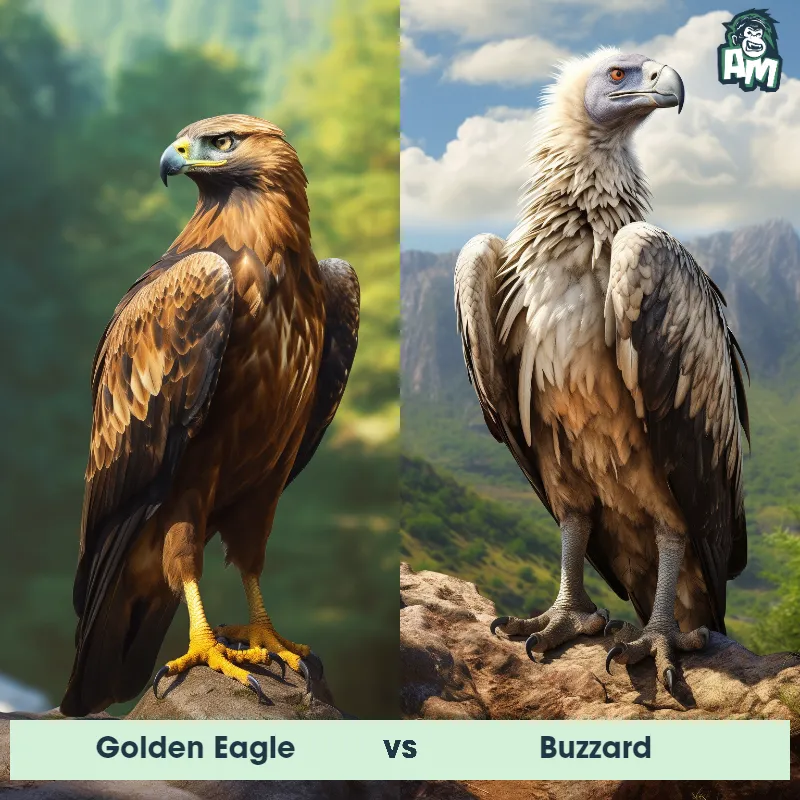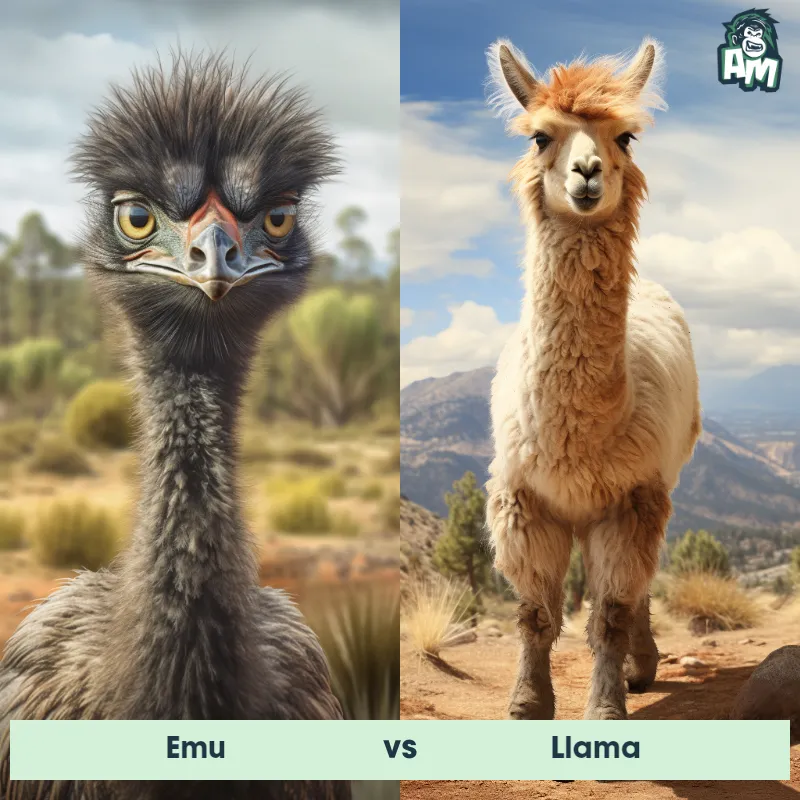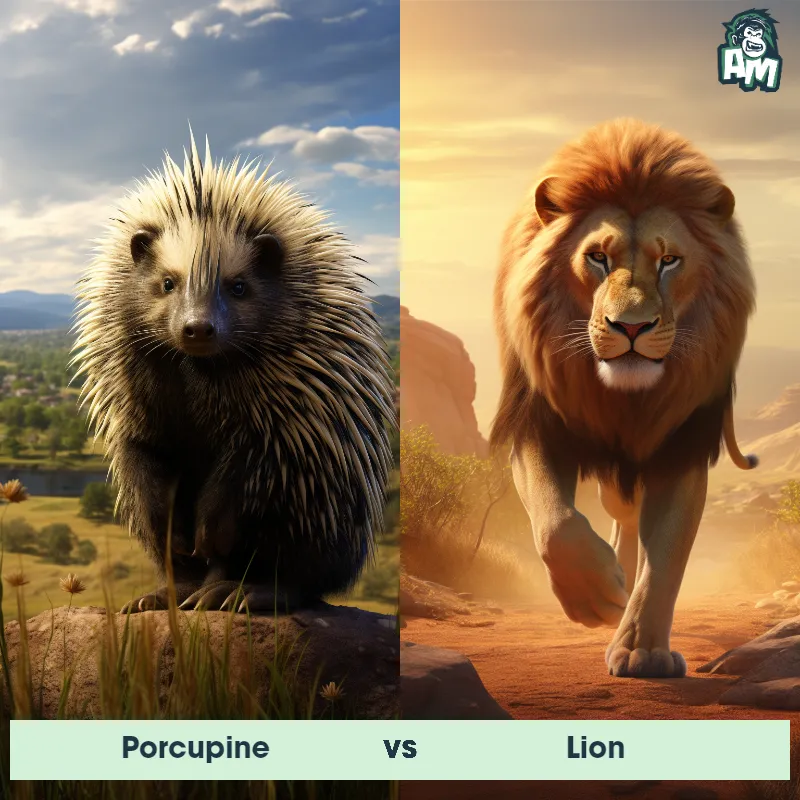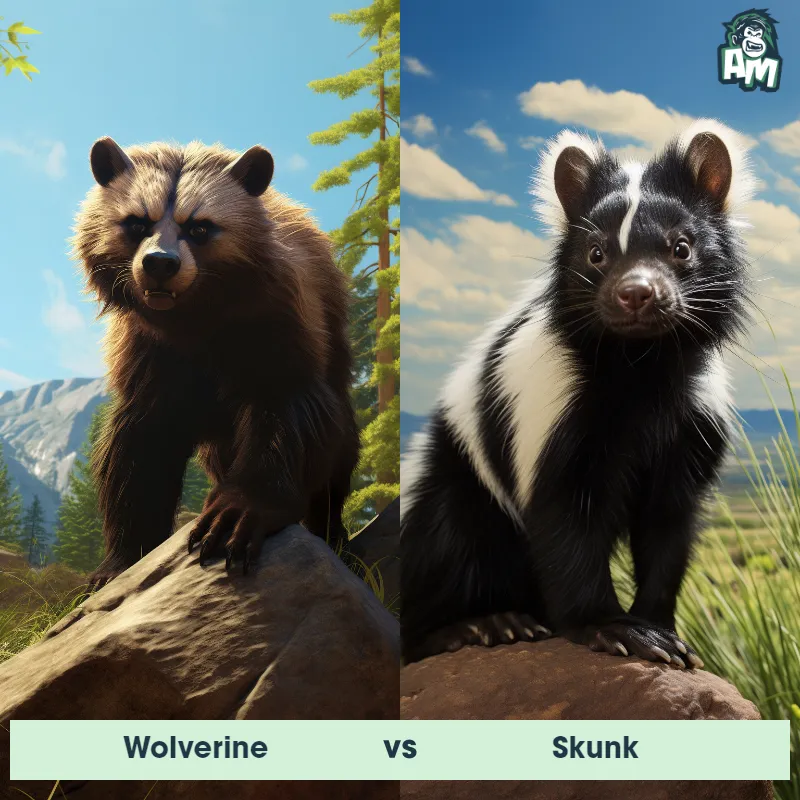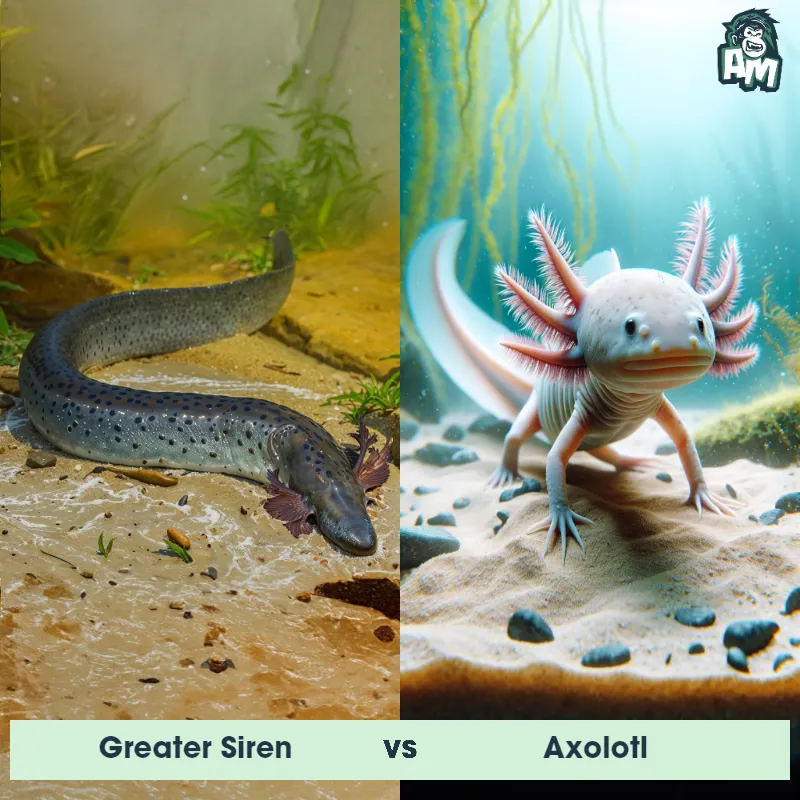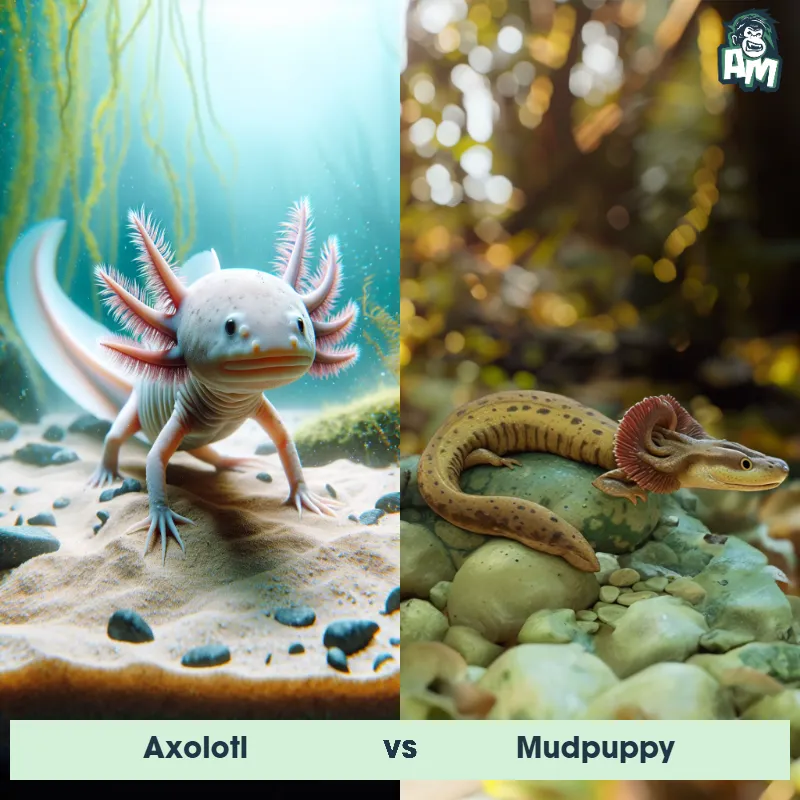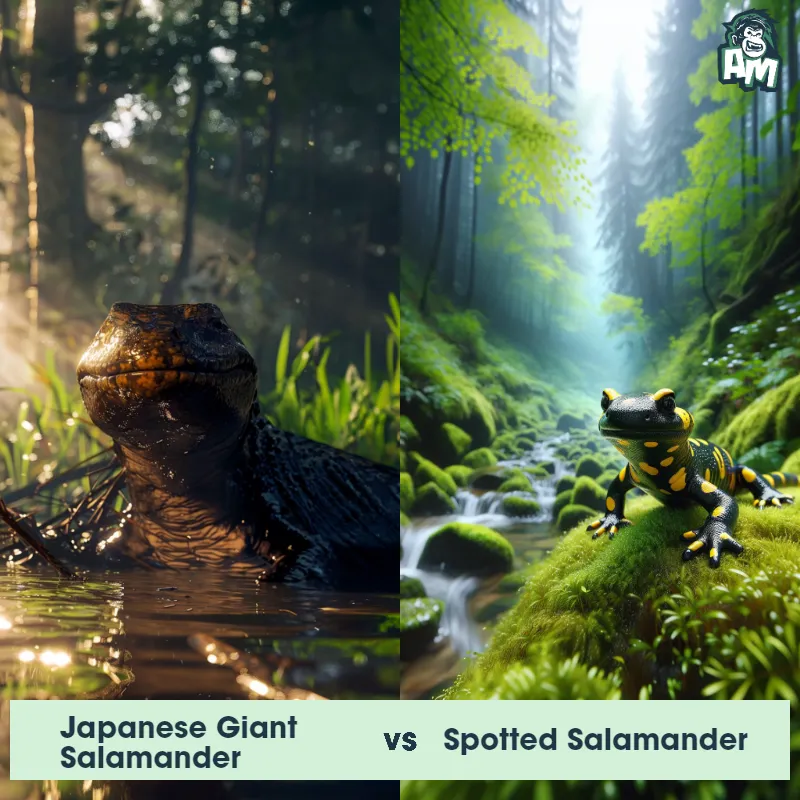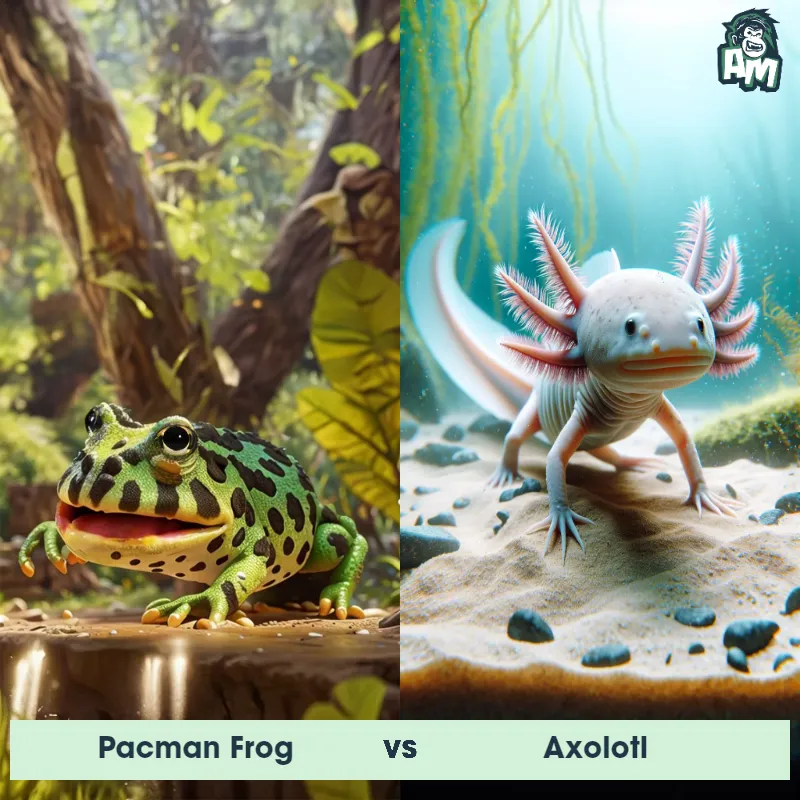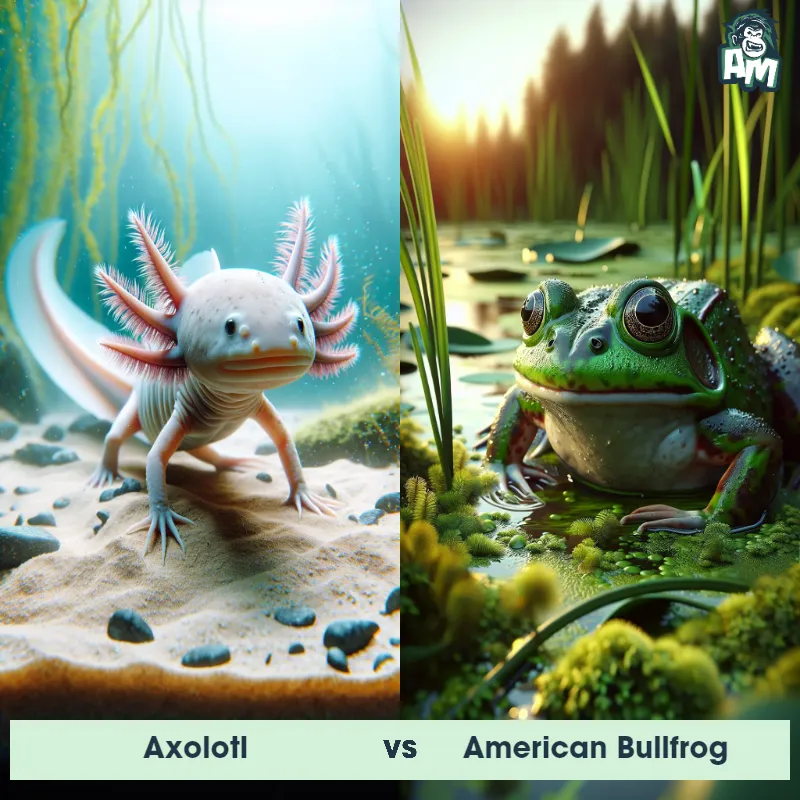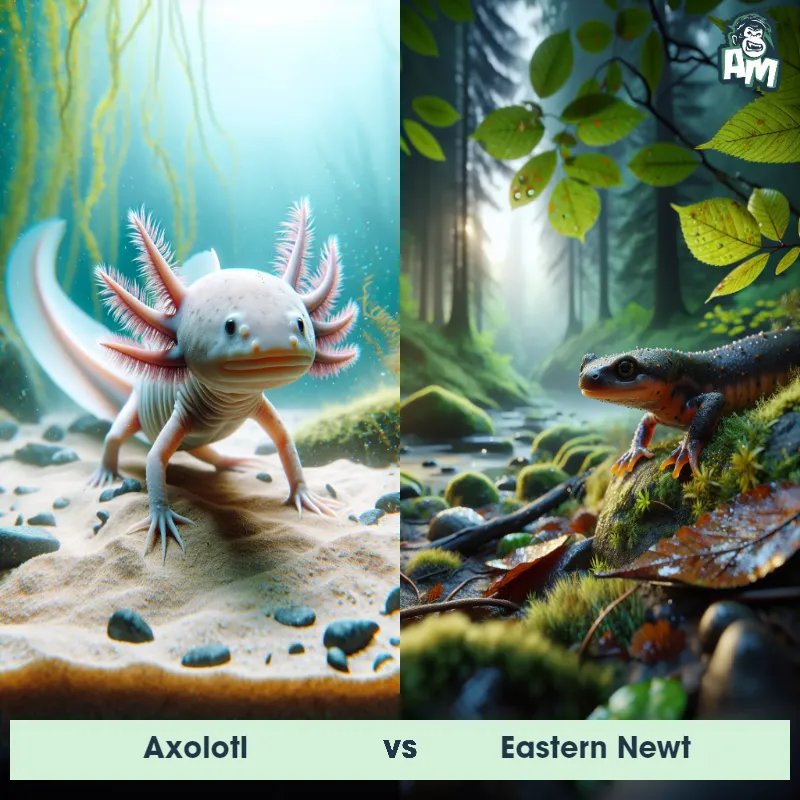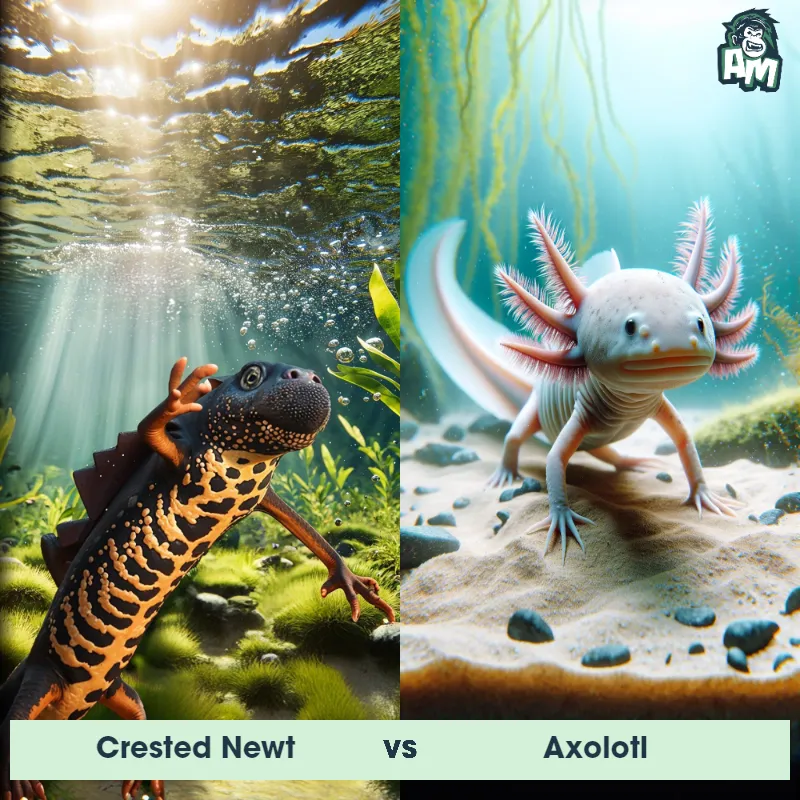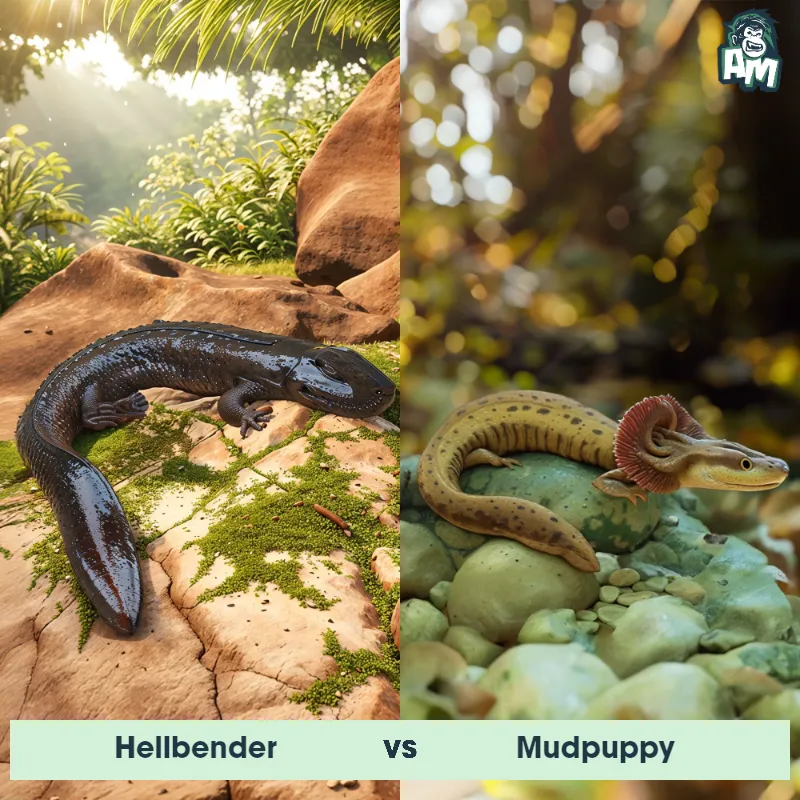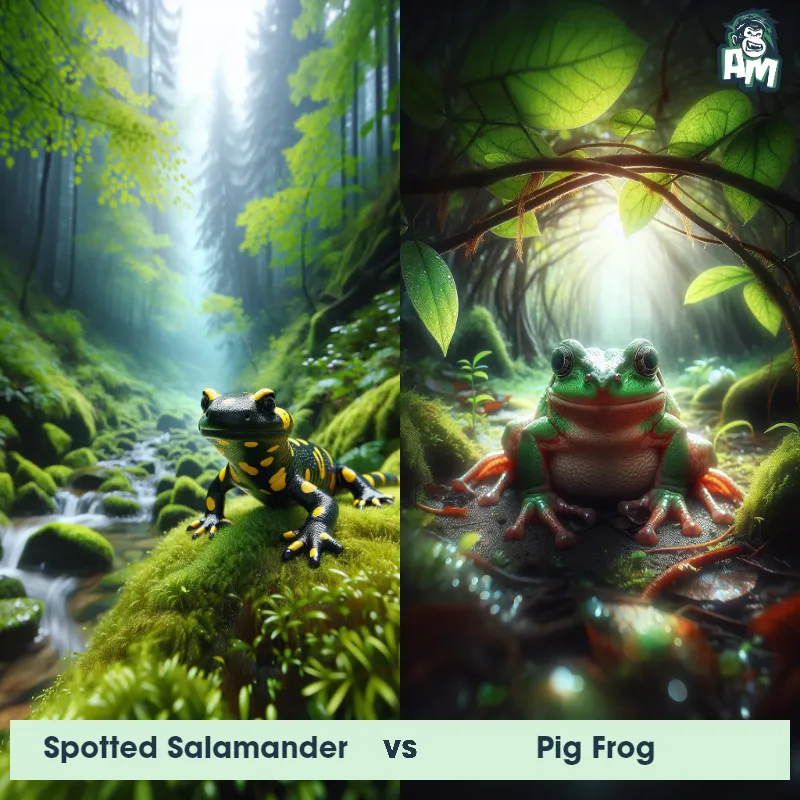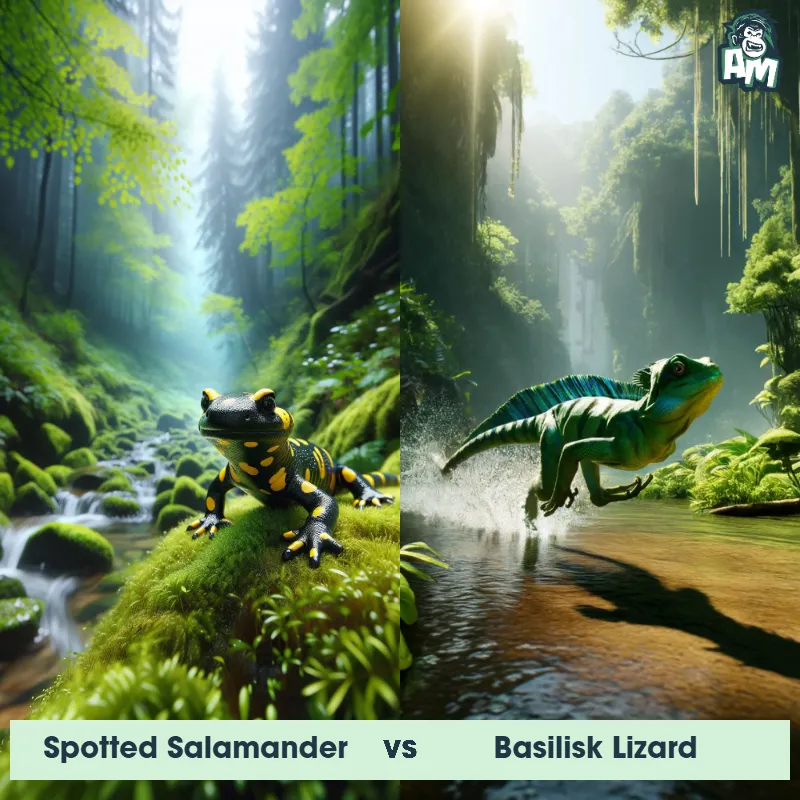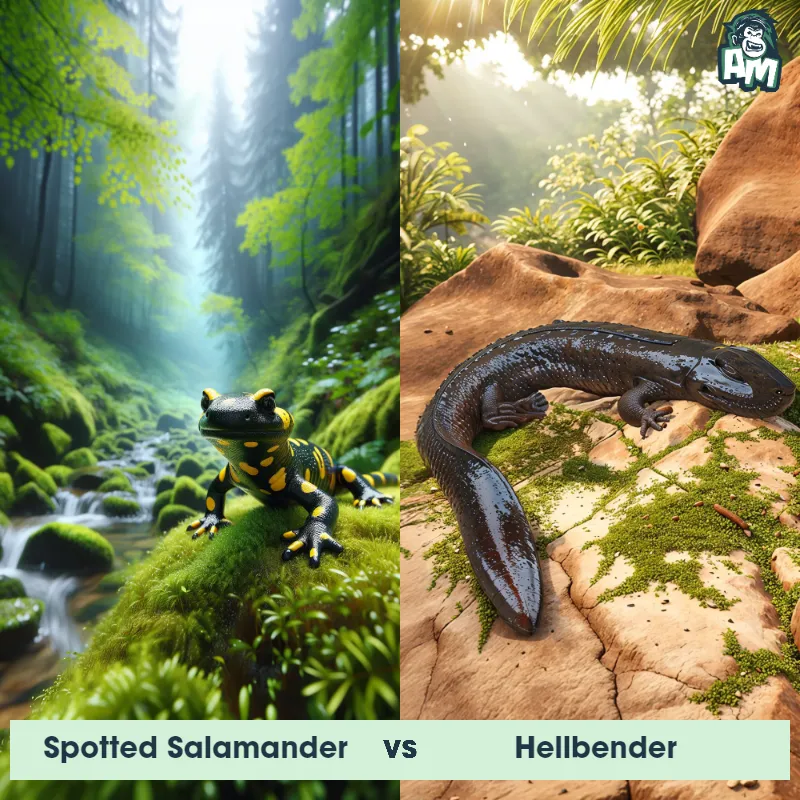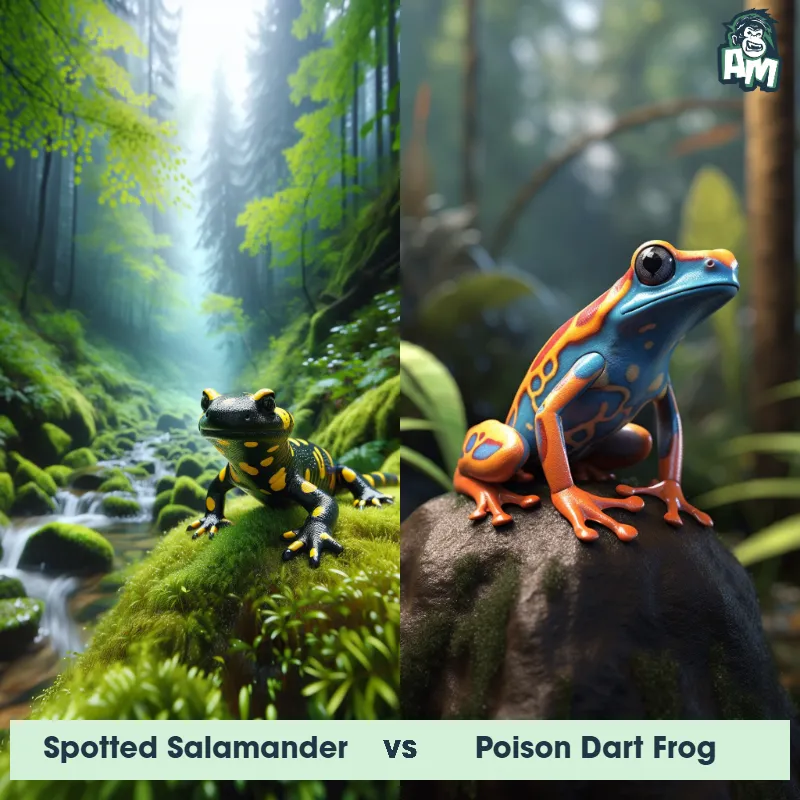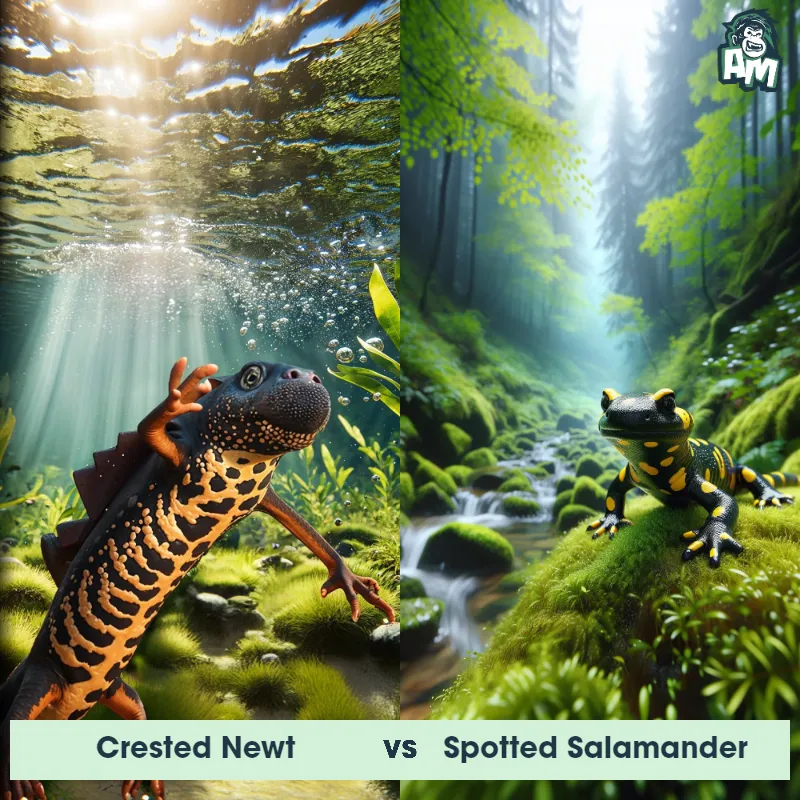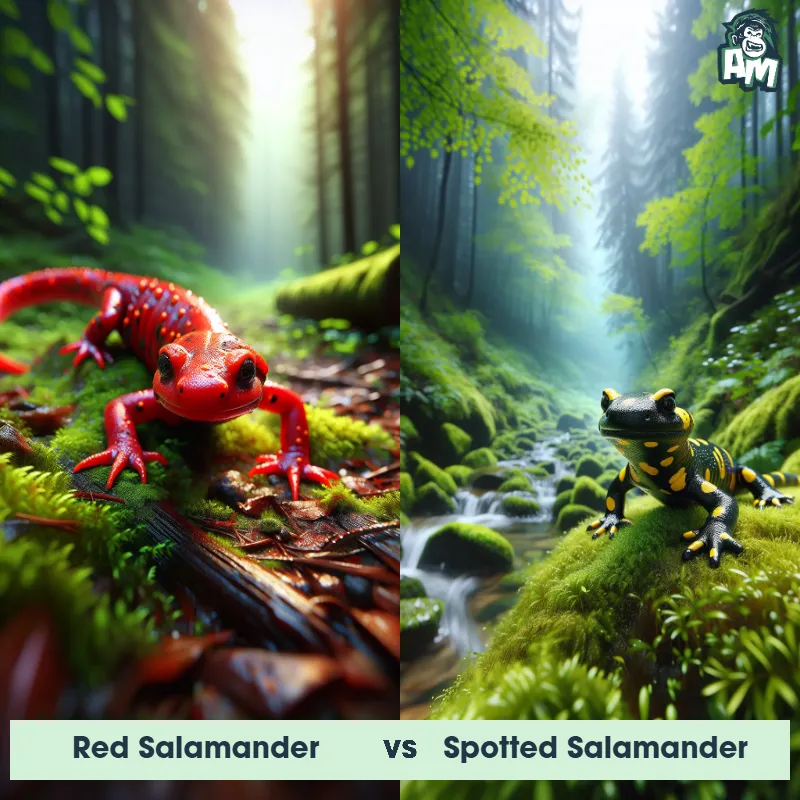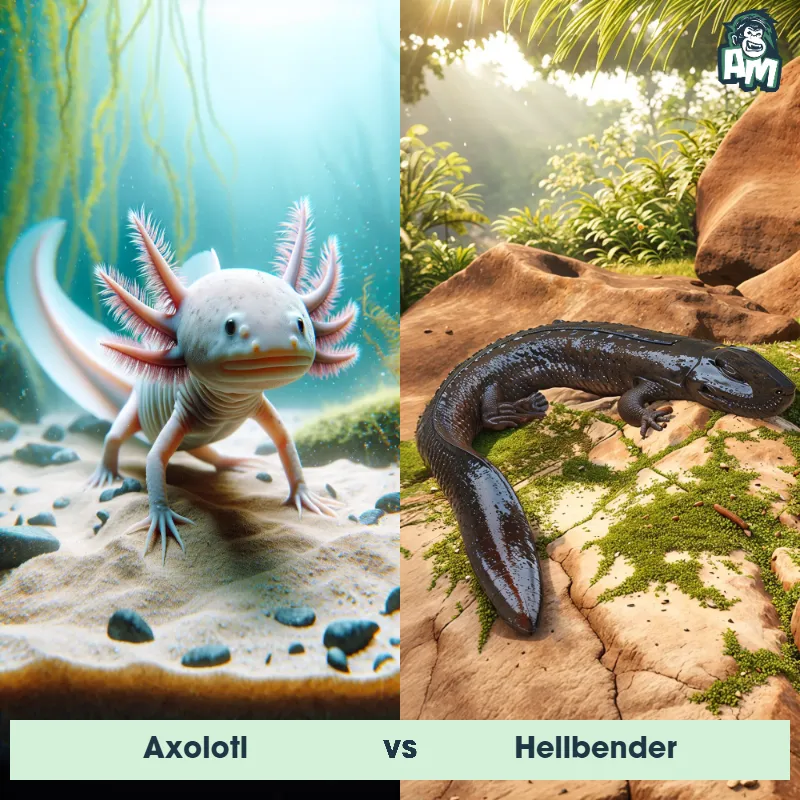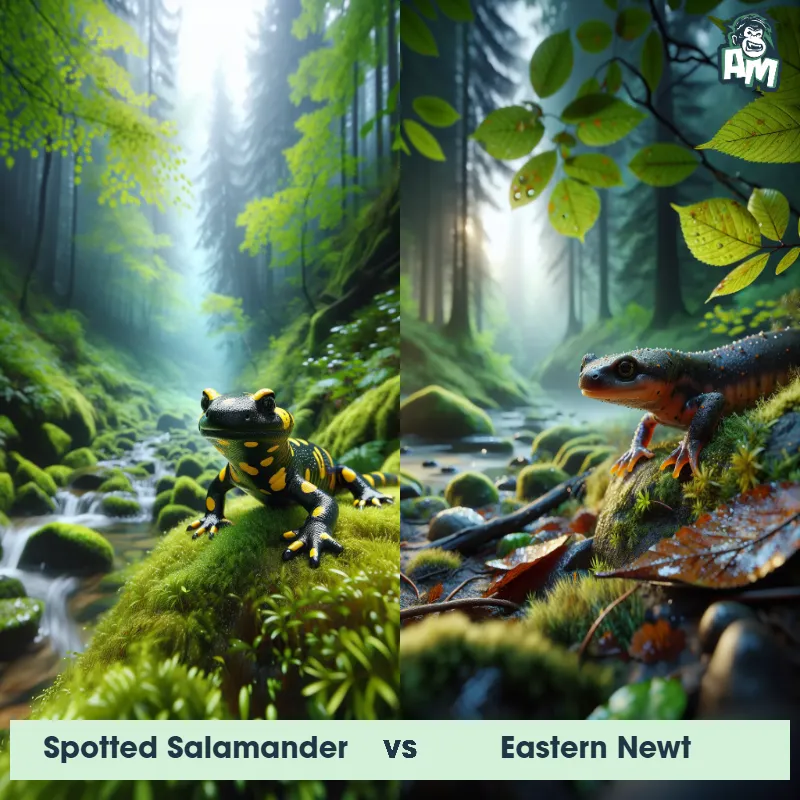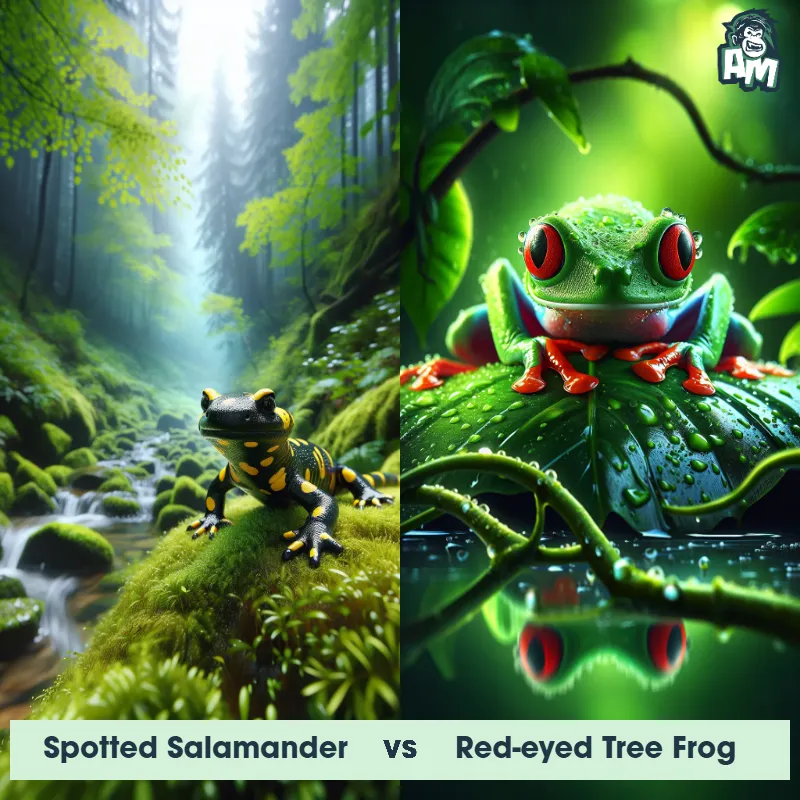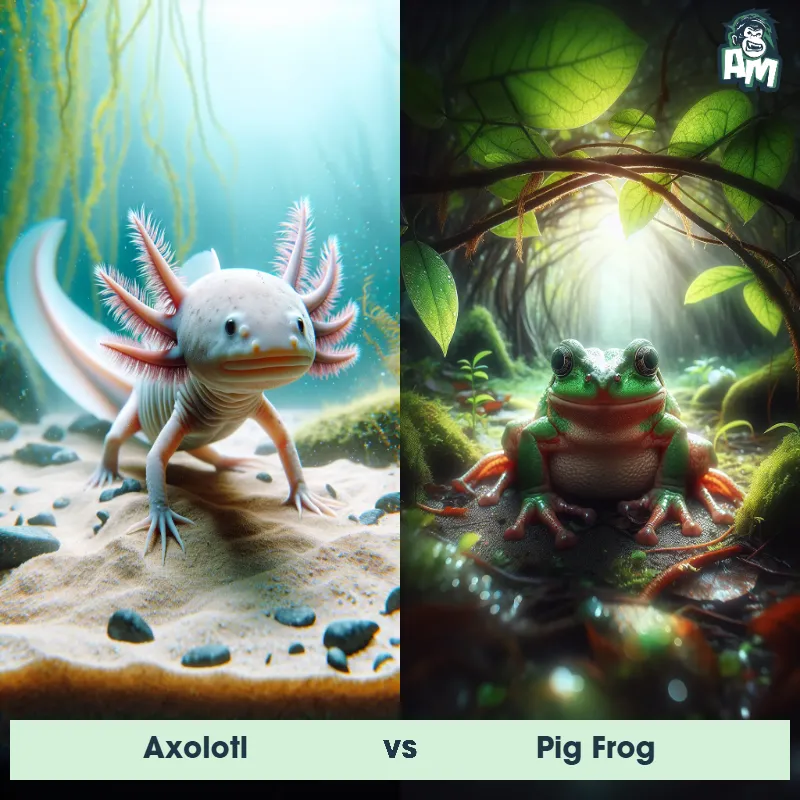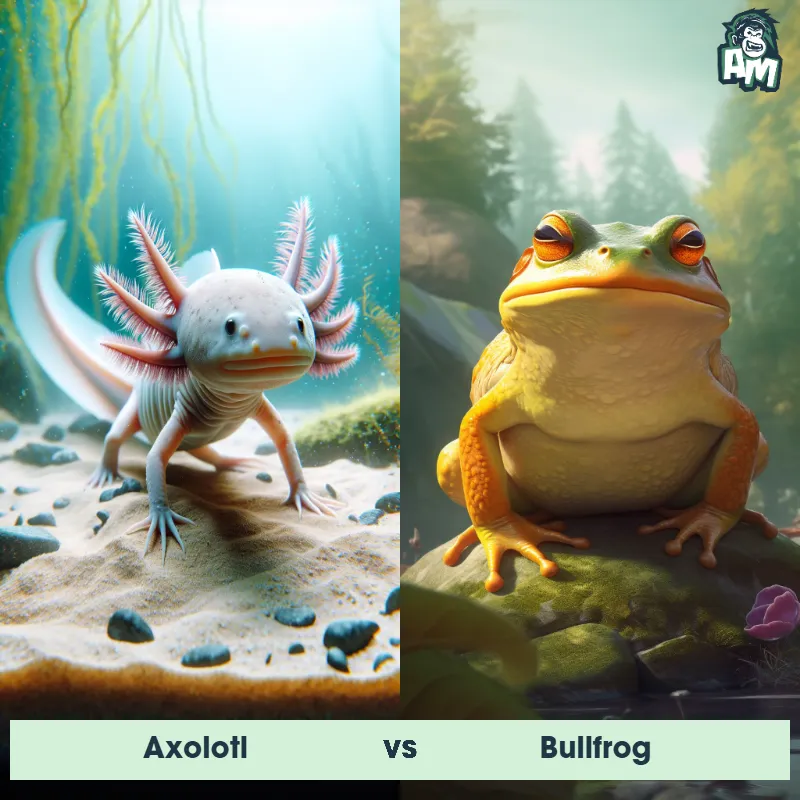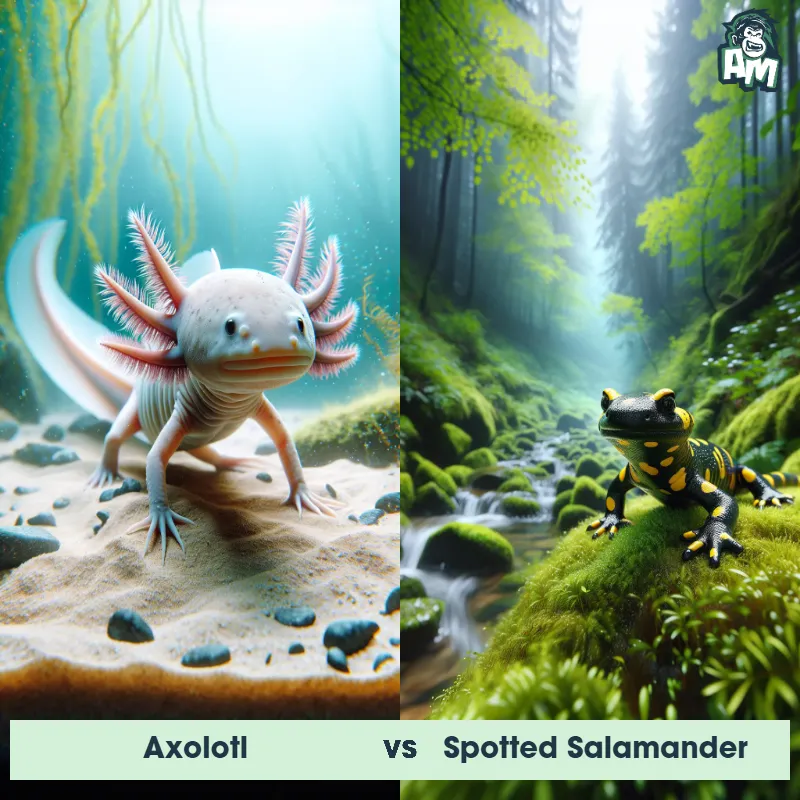Mudpuppy vs Spotted SalamanderSee Who Wins

Welcome, folks, to this exciting matchup between two amphibious creatures - the Mudpuppy and the Spotted Salamander. Both of these creatures are known for their agility and cunning, so we are in for quite a battle today.
Contender 1: Mudpuppy
The Mudpuppy, also known as the waterdog, is a type of aquatic salamander that can be found in North America. They have a robust body with smooth, slimy skin and external gills that never disappear, even in adulthood. Mudpuppies typically have dark-colored bodies with lighter spots or speckles and can grow up to 13-16 inches in length. They are known for their large, paddle-like feet that help them navigate through the water.
Fun Fact: Mudpuppies are one of the few salamander species that are completely aquatic and never leave the water, making them excellent swimmers with their webbed feet.
Contender 2: Spotted Salamander
The Spotted Salamander is a large, colorful amphibian found in North America, known for its distinctive yellow spots against a dark blue or black body. It has a broad head, prominent eyes, and a long tail. These salamanders are nocturnal and spend most of their time in burrows or under logs, emerging during mating season.
Fun Fact: Spotted Salamanders are known for their unique mating ritual, where they form "mating balls" consisting of multiple males surrounding a female as she lays her eggs.
Matchup Stats
| Mudpuppy | Spotted Salamander | |
|---|---|---|
| Size | 13-16 inches (33-41 cm) | 6-7 inches (15-18 cm) |
| Weight | 6-18 ounces (170-510 grams) | 2-4 ounces (57-113 grams) |
| Speed | 25 mph (40 km/h) | 4-5 mph (6.4-8 km/h) |
| Key Strength | Strong grip and bite | Poisonous skin glands |
| Biggest Weakness | Vulnerable to drying out on land | Slow movement |
Current Votes
Mudpuppy vs Spotted Salamander
See Who Wins
View More Matches
Looking For More?
Similar Matches
Scientific Stats
| Mudpuppy | Spotted Salamander | |
|---|---|---|
| Scientific Name | Necturus maculosus | Ambystoma maculatum |
| Family | Proteidae | Ambystomatidae |
| Habitat | Aquatic environments, such as rivers, lakes, and streams | Woodlands, forests, and wetlands |
| Geography | North America | North America |
| Diet | Carnivorous, feeding on insects, crustaceans, small fish, and aquatic invertebrates | Insects, worms, slugs, and small invertebrates |
| Lifespan | 12 years - 20 years | 10 years - 20 years |
Key Differences between Mudpuppy and Spotted Salamander
- Size: The Mudpuppy is generally larger in size than the Spotted Salamander.
- Color pattern: The Mudpuppy has a mottled grey or brownish coloration, while the Spotted Salamander has distinct yellow or orange spots on a black or dark brown background.
- Range: Mudpuppies are more widespread and found in various regions across North America, while the Spotted Salamander's range is more restricted to eastern parts of the continent.
- Skin texture: The skin of the Mudpuppy is smooth, while the Spotted Salamander has rough, bumpy skin.
- Reproduction: Mudpuppies lay eggs that hatch into aquatic larvae, while Spotted Salamanders lay eggs that develop into terrestrial juveniles.
- Habitat: Mudpuppies are primarily aquatic, found in streams, ponds, and other water bodies, while Spotted Salamanders are terrestrial, living in forests and wooded areas.



